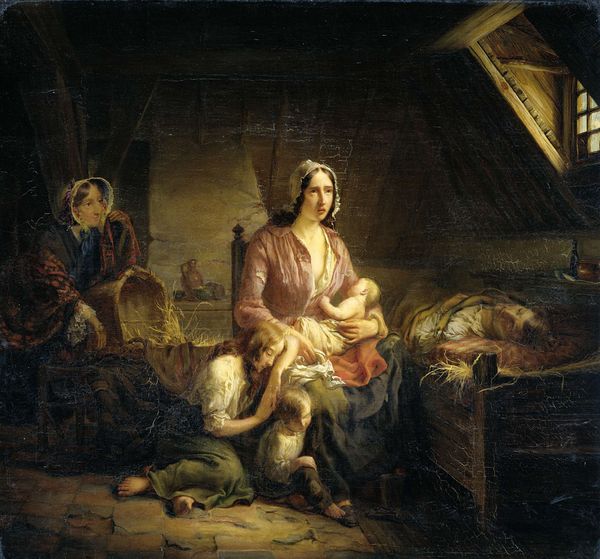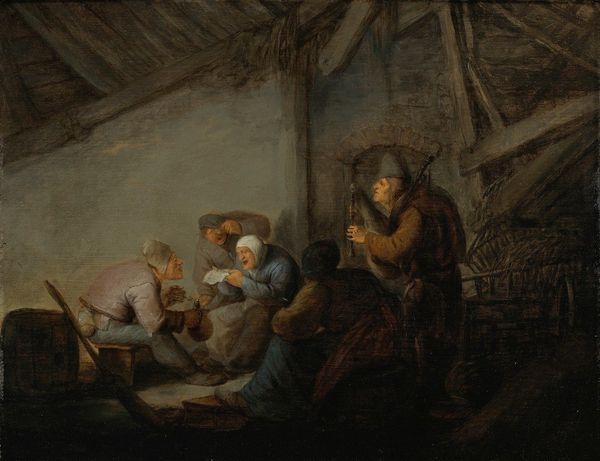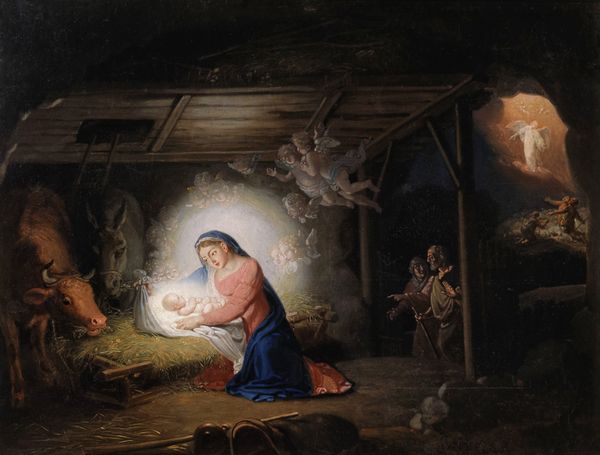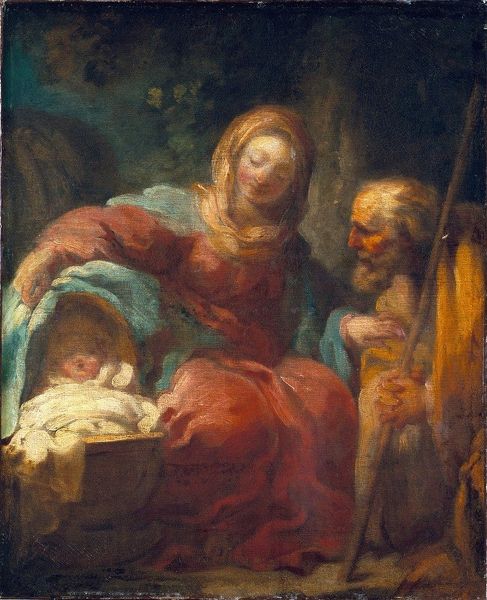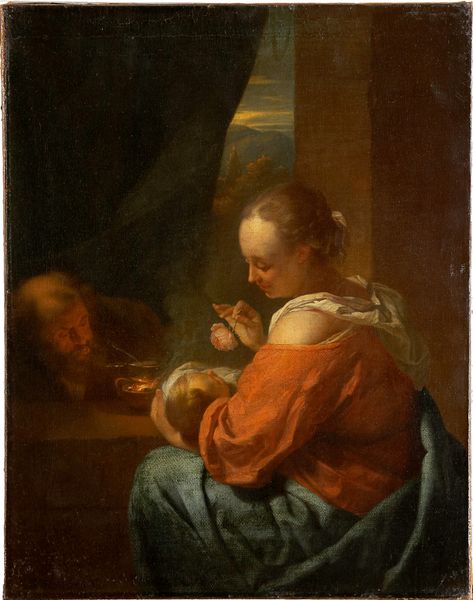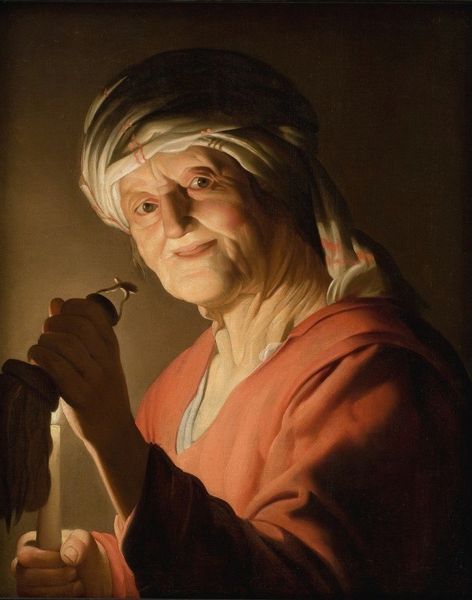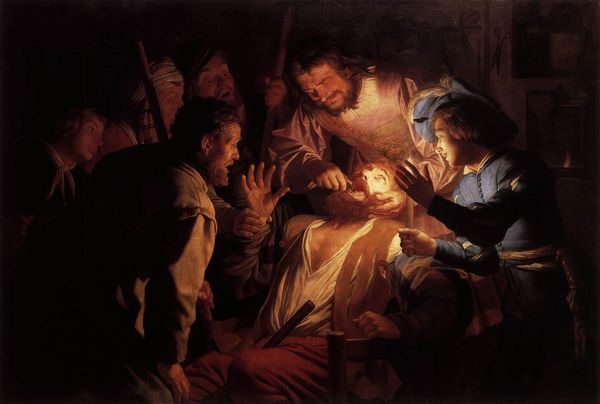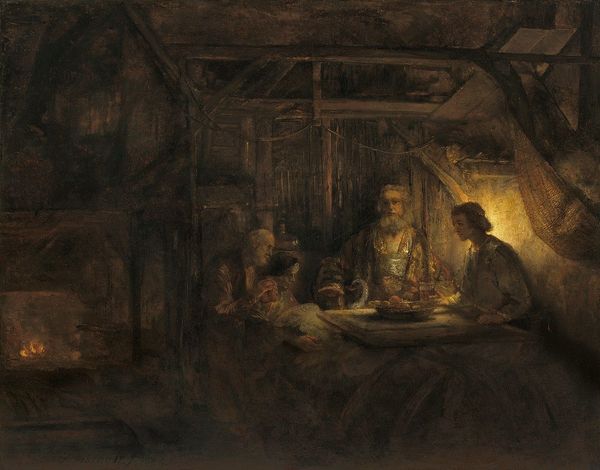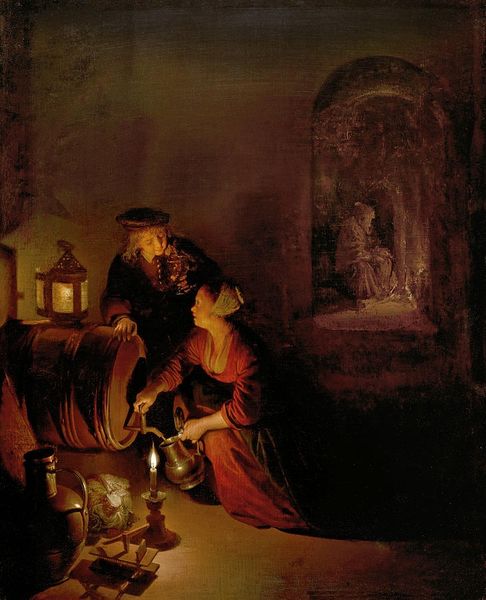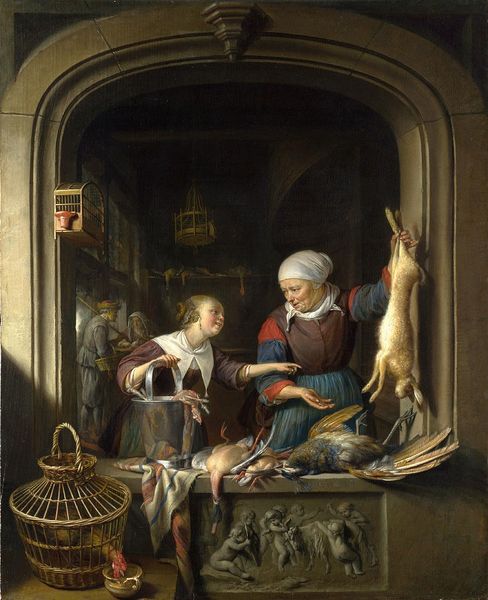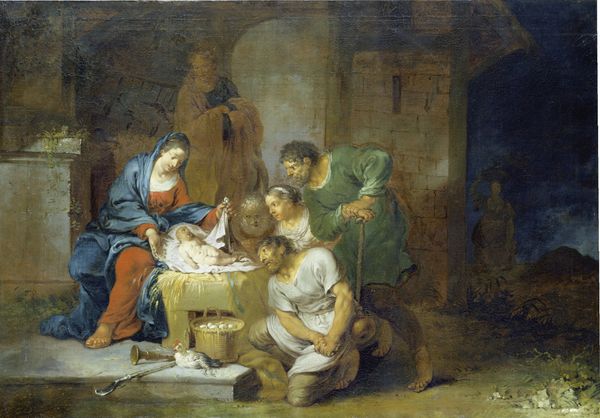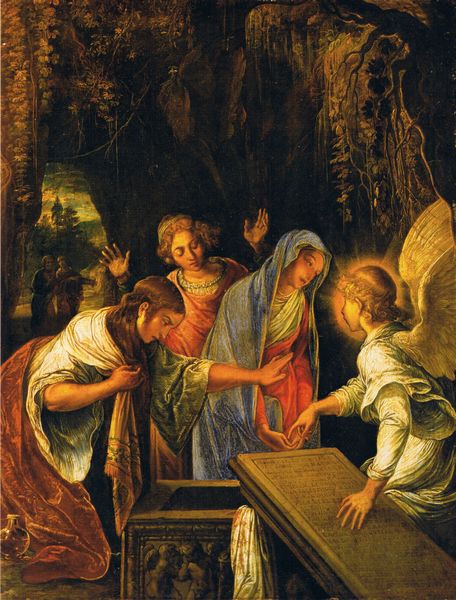
Copyright: Public Domain: Artvee
Jean-François Millet painted this image of a woman sewing by lamplight, using oil on canvas, sometime in the mid-19th century. In this period, we begin to see the rise of Realism in France, and Millet here shows the everyday labor of rural women. How does the painting create meaning? The lamp is dim, but it provides the only source of light. The woman’s face is illuminated by the lamp. This draws attention to her and suggests her importance. The sewing, the lamp, and the woman’s modest clothing all signal her social standing. The woman is part of a domestic sphere and likely poor. This image doesn't critique the institutions of art directly. Instead, it comments on social structures by focusing on a subject previously ignored by the art world. To better understand this painting, we might research the role of women in rural France. We could also explore economic structures of the time. Art is contingent on social context.
Comments
No comments
Be the first to comment and join the conversation on the ultimate creative platform.
